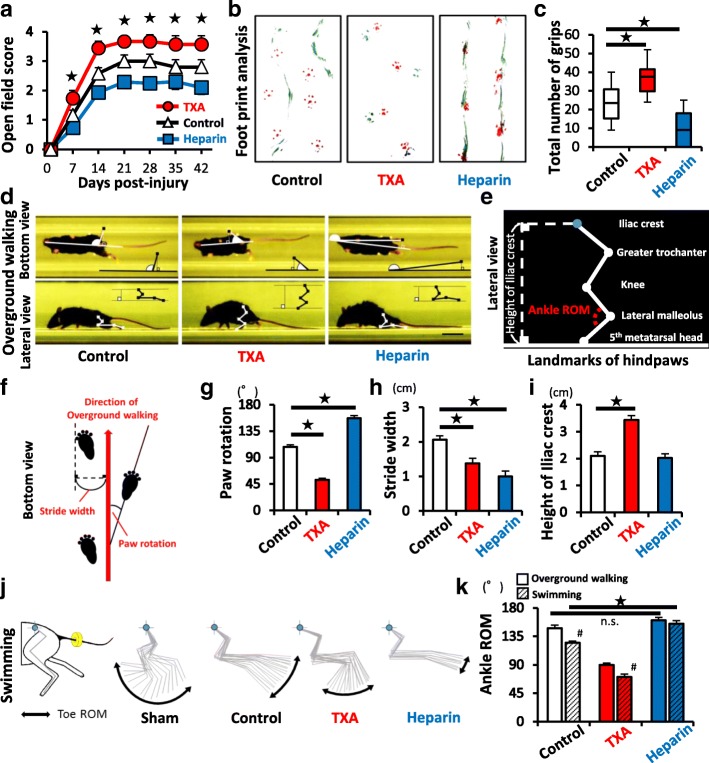Fig. 6.
TXA improves functional recovery after SCI. a The open field score (BMS) was determined at each time point after SCI (TXA: n = 15, heparin: n = 14, control: n = 15). b, c The results of the footprint analyses (red, forepaws; green, hindpaws) and the grid walk test at 6 weeks after SCI (TXA: n = 15, heparin: n = 14, control: n = 15). d Bottom and lateral view in overground walking in MotoRater®. e A schematic illustration of the hindpaw landmarks (lateral view). f The definition of the direction of movement, paw rotation and stride width in overground walking (bottom view). g–i The results of MotoRater® measurement based on the definitions of d–f. j The kinetic parameters of MotoRater® measurement during swimming. Blue dot indicates the iliac crest. Yellow circle around the tail indicates a floating ring to increase buoyancy. k Quantification of ankle ROM in both overground walking and swimming. (TXA: n = 15, heparin: n = 14, control: n = 15). The swimming analysis showed greater sensitivity in detecting the improvement of the ROM than the overground walking analysis. Scale bars, 1 cm (d). *p < 0.05, two-way repeated-measures analysis of variance (ANOVA) with the Tukey-Kramer post-hoc test (a) and Dunnett’s test (c, g–i) in comparison to control mice. Wilcoxon rank-sum test between overground walking and swimming (#) and Dunnett’s test in comparison to control mice (black star) (k); n.s. not significant. Error bars indicate the SEM

